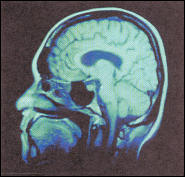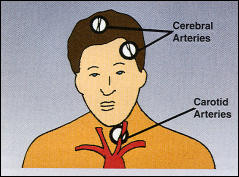What is Stroke?
By Hans Diehl, M.D. www.chiphealth.com
Two million Americans lie crippled from paralyzing strokes. After AIDS and cancer, stroke is probably the most dreaded and disabling disease to afflict Western civilization. In the U.S., stroke is the leading cause of adult disability.
What Are A Person's Chances Of Developing A Stroke?
Some 730,000 Americans suffer strokes each year and 160,000 die from them. As with heart attacks, serious and even fatal strokes can occur without warning. Around one-fourth of victims under age 70 die from the first attack; after that the figure doubles.
Of those who survive, 40% need some degree of on-going special care, but only 10% require institutionalization.
The remaining 60% represent the good news. Some recover completely; nearly all improve enough to care for themselves; most are able to resume their normal activities.
What Causes A Stroke?
A stroke, or Cerebral Vascular Accident (CVA), is most commonly related to atherosclerosis—a thickening, narrowing, and hardening of arteries supplying the brain with oxygenated blood. Atherosclerosis can occur both in the arteries within the brain and in arteries leading to the brain. The roughened, ragged inner surfaces of damaged arteries become seedbeds for clot formation and plaque buildup. When obstruction is complete, the arteries are said to be thrombosed. Atherosclerosis can begin in early adolescence, and is usually found in most major arteries. Atherosclerosis is asymptomatic and not detected by most diagnostic methods during life until it is often too late.


Sometimes pieces of plaque or a blood clot break off from other parts of the circulatory system and travel to smaller brain arteries, producing obstruction. These are called emboli. Some 80% of CVA's result from either thrombotic or embolic arterial blockage.
Hemorrhages, or blowouts, cause the rest of the strokes. Most of these are associated with uncontrolled high blood pressure which forces blood through cracks in stiffened artery walls. A few blowouts are caused by aneurysms. Aneurysms are ballooned-out areas in certain arteries that eventually rupture. Aneurysms often occur in arteries at the base of the brain and in the aorta (the main heart artery). Either way, the result is bleeding into the brain. The larger an aneurysm becomes, the more likely it is to burst.
Strokes do their damage by preventing fresh blood from reaching an area of the brain, which soon dies from lack of oxygen. If a large portion of the brain is affected, the stroke will be severe or fatal. A smaller area of brain damage will cause lesser symptoms.


-

-

-

-

1-800-PSALM-23